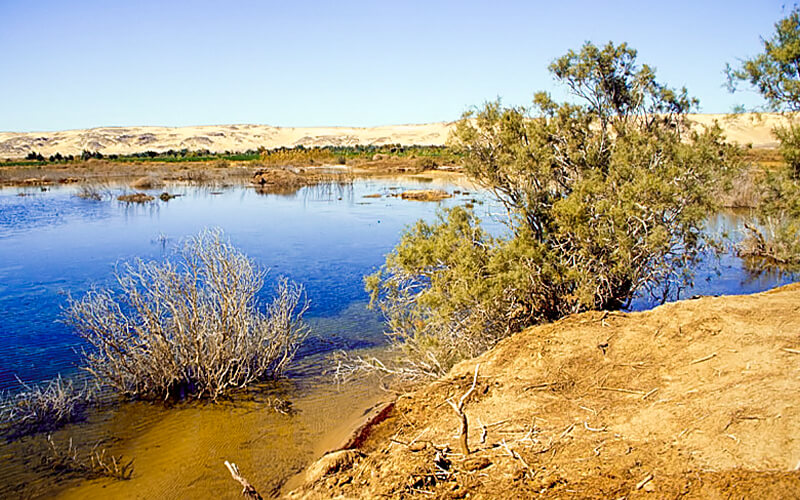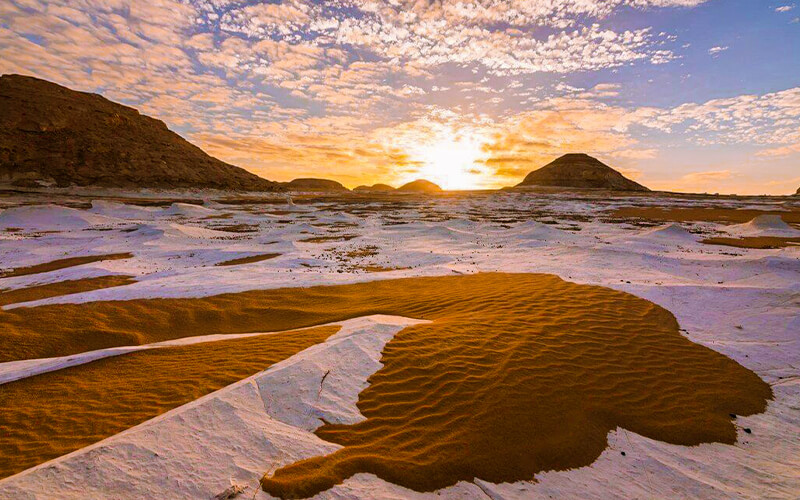El Dakhla Oasis
The Dakhla Oasis is one of the most exciting places to visit in Egypt. For a good reason: it is home to some of the country’s most impressive buildings, breathtaking natural scenery, and authentic ancient Egyptian artifacts and handiworks. All of these things make the oasis known as a mesmerizing place for tourists to visit. The Dakhla Oasis is a great place to visit because it gives people a chance to see some of Egypt’s most beautiful scenery.
If you’re looking to spend a fantastic vacation in Egypt check out our Egypt Excursions with our qualified Egyptologist with the best Egypt travel guide in Egypt and check Egypt Oases.
Location of Dakhla Oasis
There are about 350 kilometers between the Dakhla Oasis and the Nile (or 220 miles). The new valley state is where you can find the Dakhla Oasis. The width from north to south is 25 kilometers, and the length from east to west is 80 kilometers (50 miles) (16 miles). You can find it in a depression between Farafra and Kharga.
The History of Dakhla Oasis
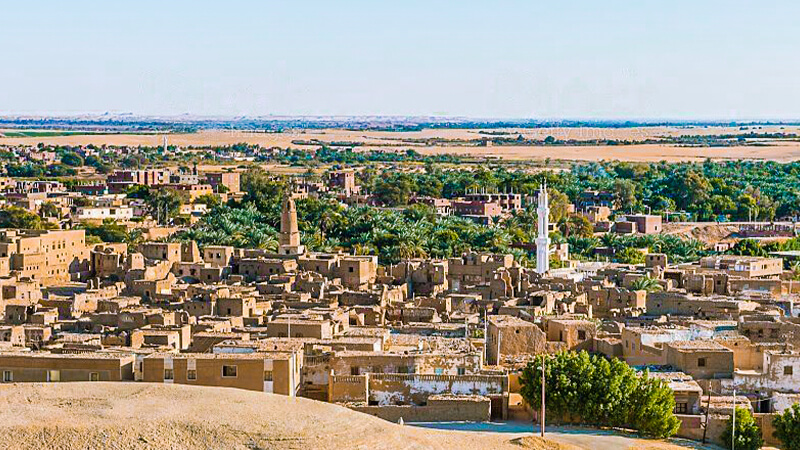
Amazing top view of Dakhla Oasis
The Dakhla oasis has been inhabited since about 2550 BC, during the 6th Dynasty. The oasis was an important station on a significant caravan trade route that linked it to Kharga, Farafra, the Nile Valley, and Libya at the time. From the oasis, this trail went to all of these locations. Dakhla distinguished itself from the other oases in the western desert because it was utilized for farming and had various springs, such as “Bir Talata” and “Bir El Gabal,” which had warm water and a pleasant atmosphere. Even though Dakhla is far from regions where papyrus is made, the governor’s mansion in the oasis of Ayn Asil (Balat) possesses roughly 500 clay tablets with hieratic writing on them. These tablets include name lists, accounts, inventory, and over fifty letters.
Top sights in Dakhla Oasis
1- The Village of Mut
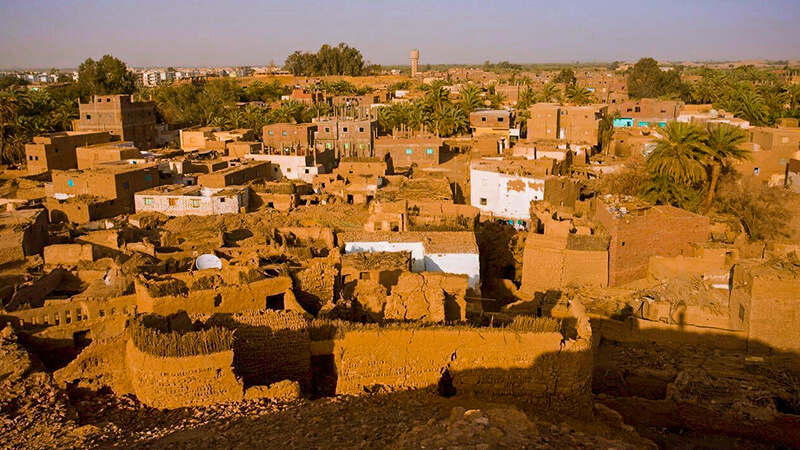
Top view of Village of Mut
Mut is the biggest and most significant town inside the oasis’s limits. Mut is named after the Egyptian goddess Mut, who was wedded to the well-known deity Amun of Thebes, and Mut was respected in ancient Egypt. The remains of Mut El-Kharab, an ancient Roman settlement, may be found to the southeast of Mut, although they have not been adequately maintained. The Bir Talata Spa attracts the most visitors in the region. This is due to the water’s high concentration of sulfur and iron, which are considered to aid in the healing of various ailments and disorders. The spa is located around two kilometers from the town center.
The depth of one of Mutt’s wells is around 1224 meters, and its wells sometimes reach temperatures of about 43 degrees Celsius. They also have a swimming pool that has a circular form, as well as several tourist restrooms that provide all tourist amenities.
2- Deir El Haggar
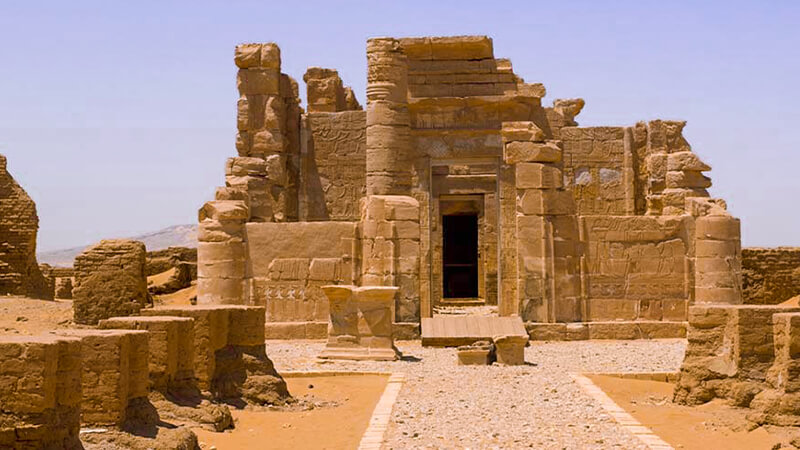
Deir El Haggar in Dakhla Oasis
A few kilometers from Qasr are the interesting Roman ruins of Deir El Haggar. Because of the sand that was used to bury this place, the once-bright paint on the statues is still there. When you think that some of this paint is about 2,000 years old, it’s hard to believe that it still looks so modern. The famous explorer Rolhfs, who is often used as an example to follow, left his mark on a column in front of the temple of Deir El Haggar. People often look up to Rolhfs as an example to follow.
On the other hand, he carved it when the sand was a lot deeper. His graffiti was taken down so that more of the temple could be seen, but you can still see what’s left of it about three meters above the ground.
On the other side of the rebuilt Roman temple are a group of conical hills with graves on them. Some of the hills have been dug up and stolen from, but if you look all over Dakhla, you’ll find many more that look the same.
3- The Village of Balat
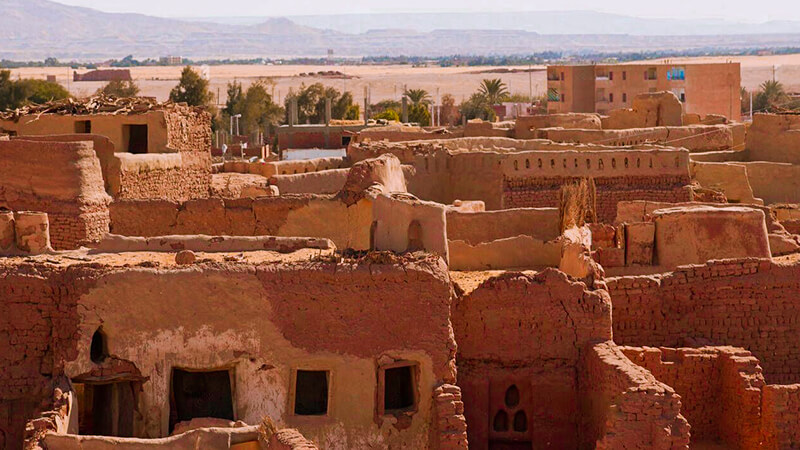
Top view of Village of Balat
From 2289 BC to 2152 BC, the town of Balat, which is north-northeast of Bashinji, was known as an important cultural, historical, and architectural site. The Qila El Dabba Necropolis and Ain Asil, the capital of the Oases during the Old Kingdom of ancient Egypt, are both in the hamlet. This has made it a well-known historical and architectural site in Egypt’s the Western Desert. During that time, Ain Asil was the capital of the Oases. In Egypt, people have lived in that area since the time of the Pharaohs. Copper objects, terracotta pottery, and copper jewelry were found in the Mastaba tomb of Khentika, who was in charge of the oasis when King Pepi I was in power. The Kharga Archeological Museum now has these things on display. The tomb was found when the Kharga Oasis was being dug up. The room where the dead person was kept was also filled with paintings and colors that were mesmerizing.
4- Bashindi Village
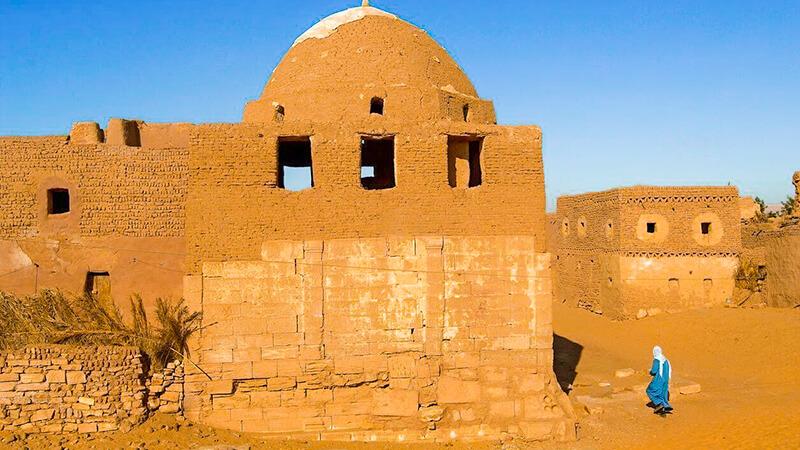
Bashindi village in Dakhla Oasis
In the town of Bashindi, 40 kilometers east of Mut, there is a necropolis with paintings in a beautiful pharaonic style. These paintings are from the Roman era. A mausoleum built by Muslims in the 11th or 12th century is also in this town. The mud-brick houses in Bashindi are so beautifully decorated and painted that they bring a lot of tourists to the small town. The settlement has a Roman necropolis with tombs that were beautifully decorated in the Pharaonic style, like Kitines. On top of the Roman necropolis, the Mausoleum of Bashindi was built by building a large mud-brick building with a dome. These two buildings are both inside the settlement.
In the village of Al-Qasr, which is about 20 kilometers north of Mut, there are a few fantastic ruins to see. The Sheikh Nasr El-Din mosque is in the village’s center; it was built during the Ayyubid dynasty in the 11th and 12th centuries and had a 21-meter-tall minaret. The town’s winding streets are lined with charming Islamic homes that are hundreds of years old. The doors of these homes have intricate carvings of the names of the owners and builders.
5- Museum of Ethnography Mut

Inside Museum of Ethnography Mut in Dakhla Oasis
The Ethnography Museum of Mutt is a representation of the oasis’s largest city. It shows some of the objects and goods that were used in the oasis during the Islamic era. Among these things are pots, rugs, and different kinds of clothing and jewelry from the time.
6- Al Qasr

Amazing top view of Al Qasr in Dakhla Oasis
This center, on the edge of the oasis, is one of the essential things the oasis has to offer. Aside from the mosque, which was built in the 12th century, some schools were built in the 10th century.
In the village of Al-Qasr, which is about 20 kilometers north of Mut, there are a few fantastic ruins to see. The Sheikh Nasr El-Din mosque is in the village’s center; it was built during the Ayyubid dynasty in the 11th and 12th centuries and had a 21-meter-tall minaret. The town’s winding streets are lined with charming Islamic homes that are hundreds of years old. The doors of these homes have intricate carvings of the names of the owners and builders.
7- Qarat Al-Muzawwaqa
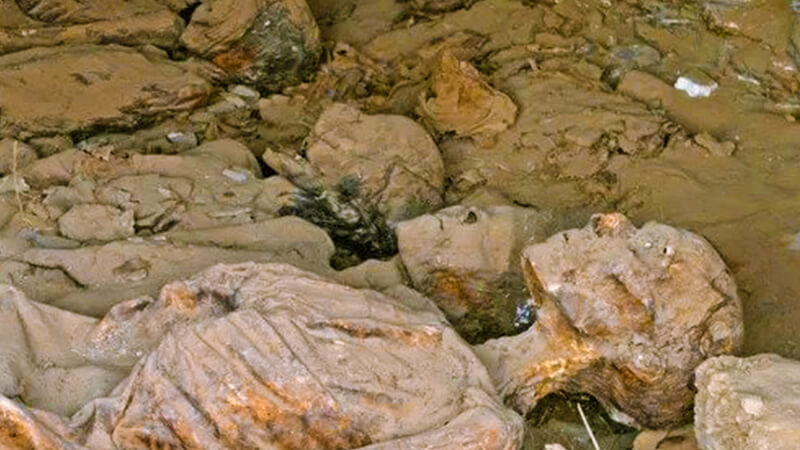
Tombs in Qarat al muzawwaqa in Dakhla Oasis
This famous hill is called “Qarat al-Muzawwaqa” in Arabic, which means “Decorated Hill” in English. The name of this hill comes from the beautifully decorated tombs of Pelusis and Petosiris, which can be seen here. However, there are other tombs and cemeteries on this hill as well.
If you ever find yourself in Egypt, don’t miss the chance to see such a stunning region by going on one of our tours; no other location on earth can compare to the enchanting beauty of this oasis. Egypt Vacation Packages.


